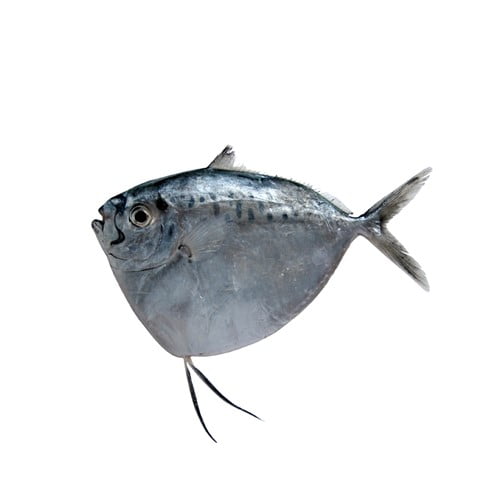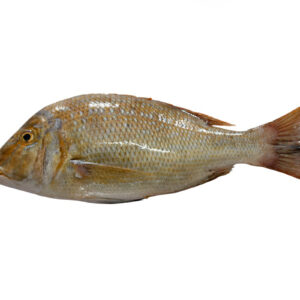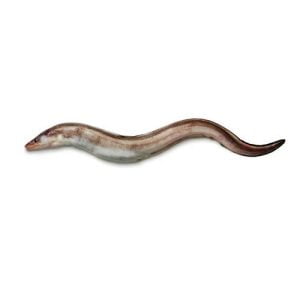Moonfish (Chandni) — Soft, Mild & Perfect for Frying, Curry, Tawa & Daily Home Cooking
Moonfish — popularly known as Chandni Fish — is a light, soft-textured, and mild-flavored seafood choice that’s perfect for everyday meals. Its tender white meat cooks quickly, absorbs spices beautifully, and has no strong smell, making it ideal for families, kids, and anyone who prefers gentle, easy-to-eat fish.
Because of its soft, buttery texture, Chandni is excellent for golden frying, light masala curry, tawa recipes, steaming, or pan-searing. It remains moist inside and develops a delicious crisp outside, which makes it a favorite in many coastal-style kitchens.
Freshly sourced from the Arabian Sea, cleaned professionally, and delivered chilled — Moonfish (Chandni) gives you great taste, great value, and great convenience all in one.
Similar Fish to Try
If you enjoy Moonfish (Chandni), you may also like:
Tilapia (Daiyya), Rabbit Fish (Safi) — all mild, tender options perfect for families.
Flavor Profile
This is a weirdly built fish, but more edible than you might expect for something that flat and bony.
Nomenclature
- English Name: Moonfish, Mene fish
- Local Name: Chandni
- Other Names: Bilong-Bilong, Chabita, Hiwas or Tahas
- Scientific Name: Mene Maculata
Habitat
Moonfish (Chandni Fish) is a Sea fish that lives in Deeper coastal waters, around coral reefs, sometimes in estuaries.
Catching Method
At Anbar Fish Karachi, Moonfish (Chandni) is caught using coastal netting and small-scale trawling methods. It is a bulk catch species, sorted and iced immediately to retain freshness and export-grade quality. We select the best sizes suitable for both local retail and export standards.
Physical Attributes
Moonfish (Chandni Fish) do not have visible scales. The body is highly compressed laterally and very deep vertically. The ventral profile is steep, with a sharp ventral edge. The caudal fin is deeply forked. The mouth is small and protrusible.
Color
The Moonfish (Chandni Fish) is silvery below and blue-green on the back, with three to four rows of dark gray spots on the upper side
Size
On average, the Moonfish (Chandni Fish) size range is 50 to 150 grams per fish. However, other sizes are also occasionally available.
Cleaning Preferences
Moonfish (Chandni) is available whole, gutted, or headless & gutted. Due to its small size and thin body, it is not typically filleted or sliced. Most customers prefer it cleaned whole for frying or curry.
Approx. Cutting Yields
- Whole: 100%
- Gutted: 80%
- Headless and Gutted: 60%
- Slices: 55%
- Boneless: 40%
Why Choose Moonfish (Chandni) from Anbar Fish?
Mild, Clean Taste – No strong smell
Soft, Tender Meat – Perfect for quick meals
Budget-Friendly – Excellent value for daily cooking
Cooks Very Fast – Ideal for busy households
Versatile – Fry, curry, grill, tawa or pan-sear
Fresh & Hygienic Delivery – Cleaned, washed & ready to cook
Health Benefits of Moonfish (Chandni)
High in Lean Protein – Great for strength & daily nutrition
Low in Fat – Suitable for healthy diets
Omega-3 Fatty Acids – Supports heart & brain function
Packed with Vitamin B12 & D – Helps immunity & metabolism
Minerals like Selenium & Phosphorus – Strengthens bones & immune system
Cooking Inspiration
Chandni Fish Fry – Crispy golden outside, soft inside
Chandni Masala Curry – Mild fish that absorbs spices beautifully
Moonfish Tawa Masala – Perfect for a quick desi lunch
Pan-Seared Chandni Fillets – Light, healthy, and flavourful
Steamed Moonfish – Soft, moist, and ideal for low-fat diets
Pro Tip: Because the meat is soft, cook Chandni on medium heat for the perfect tenderness.
Moonfish (Chandni) — FAQ
| Question | Answer |
|---|---|
| Is Chandni a strong-smelling fish? | No — very mild and clean. |
| Is it good for frying? | Yes — soft meat that crisps beautifully. |
| Is Chandni good for curry? | Absolutely — absorbs masala well. |
| Does it cook fast? | Very — ideal for quick meals. |
| Is it healthy? | Yes — high protein, low fat, omega-3 rich. |
| Fresh or frozen? | Delivered fresh and chilled; frozen on request. |
| Is it suitable for kids? | Perfect — mild flavor and soft texture. |
| Do you clean the fish? | Yes — gutted, washed & sliced as needed. |







There are no reviews yet.